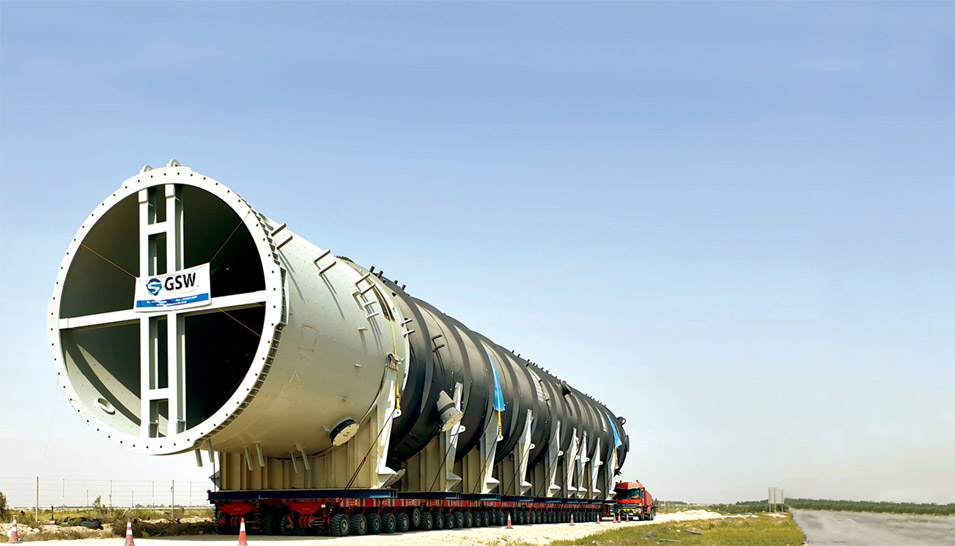
This naphtha splitter column weighing 544 tons was successfully transported from Jubail to the Ras Tanura Refinery recently. It took three weeks to complete the project, which culminated with the 65-meter column being safely lifted at the site, using a 1,600 ton main crane along with a tailing crane with a total nominal capacity of 600 tons.
Ras Tanura Refinery Clean Fuels Project has placed its heaviest and largest piece of equipment — a naphtha splitter column weighing 544 tons.
It took approximately three hours to complete the lift of this 65-meter high column after six weeks of site preparation and crane positioning.
After six weeks of site preparation and crane positioning, it took only three hours to complete the lift of the 65-meter high column.
For the lift, a 1,600 ton main crane was utilized together with a tailing crane with a total nominal capacity of 600 tons. The 8-meter-diameter column required extensive coordination during transportation. This included disconnecting several overhead power cables to allow for safe passage and modifying the Jubail-Dhahran highway to avoid bridges.
Three Weeks From Source To Site
The total transport from Jubail to the project site at the refinery was alternated between day and night to minimize community disruptions. It took three weeks from source to site, with more than 10 stops along the way.
The column is the main feeder to the new world’s largest Continuous Catalytic Reforming (CCR) and Isomerization Units, with a total operating capacity of 90,000 and 65,000 barrels per day, respectively. The main function of the naphtha splitter column is to split the hydrotreated naphtha into light and heavy naphtha, which is a key function to the Naphtha Hydrotreating Unit, as it controls the benzene precursors, which are then sent to the Isomerization Unit.
The objective is to prepare the feeds to downstream units to meet the acceptable level of the impurities in the feed to the new CCR and Isomerization Units.
The splitter column has been awarded to a local manufacturing company in Jubail as part of the iktva program, which is targeting 70% localization by 2021. The complete manufacturing of the column took more than a year, achieving more than 2,500 safe working hours.
The project will provide facilities to support Saudi Aramco’s corporate objective of effectively supplying diesel and gasoline products that comply with the future Saudi Aramco gasoline and diesel quality specifications, as per Euro-V fuels quality standards. The new naphtha complex plants that will be installed as part of the project at the refinery, are comprised of a 138 MBD naphtha hydrotreater, a 90 MBD CCR Unit, and a 65 MBD Isomerization Unit.